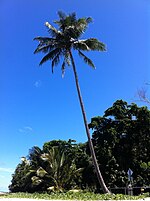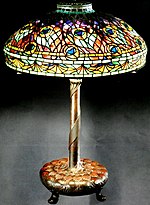sequence
A sequence of several objects is determined by a spatial, temporal or conceptual, linear arrangement of the same and a designated direction , e.g. B. by specifying the predecessor and successor . It is a one-dimensional concept, corresponding to a list and not a table . The order defines a strict total order on the set of objects. Depending on the context, there is a finite number of objects that can be passed through one or more times, or infinite numbers that have a first element ( natural numbers or sequences ) or not ( whole numbers ). On the other hand, the real numbers are an example of a set that defies the concept of a sequence because it is uncountable : the real numbers cannot be listed (see Cantor's second diagonal argument ).
In the case of temporal order and actions, events or switching states, one speaks of a sequence . If the order includes a rating, one speaks more of a ranking or ranking .
The act of sorting provides a new order, permutations describe how to get from one order to another. Most orders are defined chronologically , alphabetically or by counting (see also time perception ).
The order has nothing to do with the mathematical concept of series .


